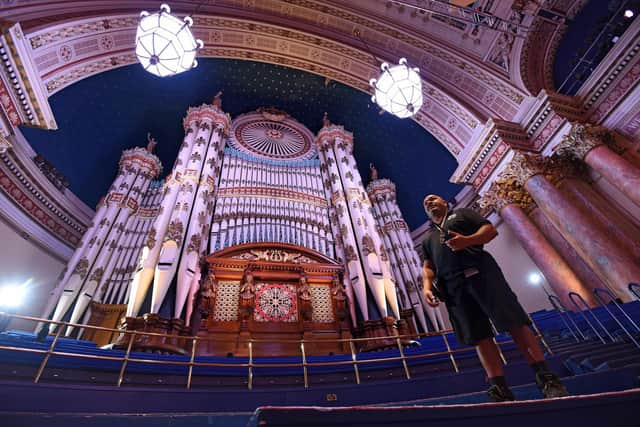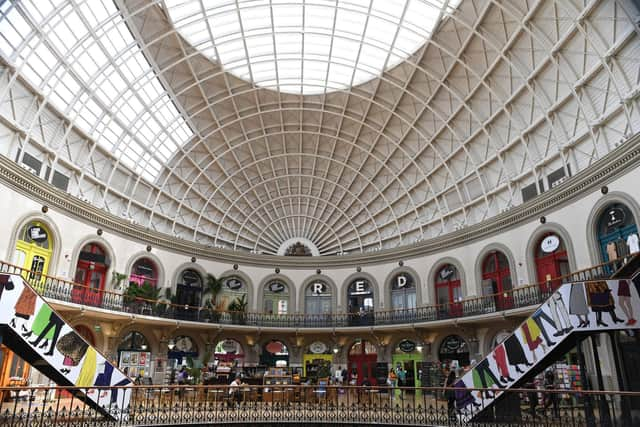Cuthbert Brodrick - the Victorian architect who built some of Yorkshire's grandest buildings
He was a good example of being the right man in the right place, at the right time. The fabled architect created a remarkable legacy, but there’s also the intriguing question of what might have been, for Brodrick decided to retire right at the height of his powers and influence.
He was born in December 1821 and lived through the entire Victorian era, before he died in the Edwardian age, in 1905. He had, though, effectively retreated from his work 30 years earlier, his latter years spent leisurely in his garden in Jersey and dabbling in painting.
Advertisement
Hide AdAdvertisement
Hide AdBrodrick came from a pretty well-to-do family in Hull, where he was one of ten children. His father owned ships and described himself as a “merchant” – his company traded with ports all over the world, bringing back luxury goods for the affluent in East Yorkshire.


As a young man Brodrick joined a local firm of architects run by Doncaster-born Henry Lockwood. He studied with Lockwood for seven years but in 1844 he surprised everyone by telling his boss that he was off – to travel around Europe and study continental architecture. Rome and Paris, in particular, were to have a profound influence on him.
When Brodrick returned to Hull two years later Lockwood offered him a partnership in the firm. However, he turned down the offer to set up on his own in the city 1846 (on Saville Street, adjacent to where the Queen’s Gardens are today).
He quickly gained some notable commissions in Hull, but it is Leeds where he left the most indelible mark through three key buildings – the Mechanic’s Institute (now the City Museum), the Corn Exchange and Leeds Town Hall. And it is the last which is arguably Brodrick’s crowning glory.


Advertisement
Hide AdAdvertisement
Hide AdNow Grade I listed (as is the Corn Exchange) Brodrick, then still a relatively unknown architect, won a contract to give Leeds a palatial “statement” to knock anything that Bradford had achieved into a cocked hat.
Work started in 1853 and over the next five years the people of Leeds watched as the portico of ten Corinthian columns went up, then the 225 feet high clock tower and its concave dome.
It was designed to be multi-purpose and when Queen Victoria herself opened the building in 1858 it housed the civic offices, municipal departments, a courtroom, a police station with holding cells, and a concert hall where the ceiling is nearly 100ft above the audience.
Brodrick called in the noted interior designer John Crace to realise his vision of the ornamentation, and the two men agreed to go for a full-blown “French effect”.
Advertisement
Hide AdAdvertisement
Hide AdDr David Wilmore, the Harrogate-based architectural historian, says the town hall is a testament to a man “at the top of his game.”
“He’s second to none and he put a stamp on the identity of Leeds,” he says. “He was clever enough to ask Crace to be a collaborator on the embellishments of the hall, which are about as near as anyone will get to being on the inside of a wedding cake – my only surprise is that he wasn’t asked to come up with plans for what was to be the Grand Theatre – now that would have been something very special indeed.”
The author Derek Linstrum – a noted contributor to the Buildings of England series by Nikolaus Pevsner – wrote that “Leeds can be proud of its Town Hall, one of the most convincing buildings of its date in the country, and of the classical buildings of its date, no doubt the most successful”.
Linstrum was even more delighted with the Leeds Corn Exchange “a building of national, maybe international, importance.” It was to influence scores of other architects charged with creating public buildings not only in the UK, but internationally.
Advertisement
Hide AdAdvertisement
Hide AdHowever, the Town Hall isn’t to everyone’s taste. Some have found Cuthbert’s monumental buildings a little too, well, monumental. Writing in the middle of last century the novelist and architectural commentator Reginald (Reggie) Turnor found the dome of the Town Hall “especially horrid”.
But there’s no denying the impact Brodrick had in Yorkshire. The only surprise, perhaps, is that he isn’t more widely known beyond the Broad Acres. “He just doesn’t get mentioned in the journals of his time in any other context than his work in Yorkshire,” says Wilmore. “He was a natural candidate for so many projects – but he was never chosen.”
Leeds isn’t the only Yorkshire community where Brodrick left his mark. But in Scarborough it wasn’t stone, but brick. Millions of them went into the construction of The Grand Hotel. When it opened in 1867, it was one of the largest buildings of its type in Europe, and among the biggest hotels in the world.
Brodrick clearly had a sense of fun, because he created it as a “calendar building”, reflecting time itself. There are four towers representing the seasons, a dozen floors for the months of the year, along with 52 chimneys and 365 bedrooms. Each had an extra set of taps, so that people could wash in sea-water, as well as fresh.
Advertisement
Hide AdAdvertisement
Hide AdIt has no less than three Blue Plaques, one of them to Anne Brontë, who died in lodgings which occupied the site before the hotel was built. The Grand is a listed building too – though its grandeur has faded in recent times.
So why did Brodrick retire so soon, to spend more time pruning his roses? We know that he went to Jersey because he had a niece who lived there.
After marrying very late in life, he was, sadly, a widower all too quickly. Probably the key reason is that, after phenomenal successes that carried him through to the midst of his career, he found himself entering competition after competition – and never getting any more truly spectacular commissions.
Few today can identify the designer of some of Leeds’s magnificent monuments, even though residents, office workers and students pass by them in their droves every day. But some of them will know the name of a popular pub, The Cuthbert Brodrick, which stands in Millennium Square, behind the Town Hall and directly opposite the Leeds City Museum which dates from 1860.
Advertisement
Hide AdAdvertisement
Hide AdHe is, though, linked to a ghostly yarn. It is said the town hall clock occasionally strikes a chime of thirteen. When it does, time is inexplicably frozen and the entire city stands still. The four lions (sculpted from Portland Stone) which guard the building slowly get up and take a stroll around their territory. When they retire to their plinths, and settle down, everything starts moving again.
Brodrick, you suspect, would have chuckled if he heard this story. After all, adding lore to landscape isn’t that bad an achievement for just one man, is it?
Inspiration from French classicism
The French style of architecture in the mid-19th century, sometimes called ‘assertive classicism’, influenced Brodrick, and the Corn Exchange’s distinctive dome design was inspired by the Bourse de Commerce in Paris.
In 1852, he made a career changing move when he entered and won a competition to design the new Leeds Town Hall, despite having only around nine buildings to his name in Hull.
Advertisement
Hide AdAdvertisement
Hide AdThe judge, eminent architect Sir Charles Barry, designer of the Houses of Parliament, was confident that Brodrick was capable of carrying out the work and even assured members of the town council who had reservations.
It came at a price, though. Leeds Town Hall’s final cost was about three times the original estimate.